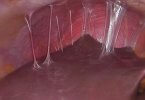What's in this article?
Elbow pain usually isn’t serious, but because you use your elbow in so many ways, elbow pain can be very frustrating. Your elbow is a complex joint; it allows you to both extend and flex, as well as rotate your hand and forearm. Since most movements are a combination of these actions, you may sometimes find it difficult to describe exactly which movement brings on the pain.
Elbow pain facts
- The elbow joint is the area of union of three long bones.
- Tendinitis can affect the inner or outer elbow.
- Treatment of tendinitis includes ice, rest, and medication for inflammation.
- Bacteria can infect the skin of the scraped (abraded) elbow.
- The “funny bone” nerve can be irritated at the elbow to cause numbness and tingling of the little and ring fingers.
Causes of Elbow Pain
Elbow pain can be caused by many problems. A common cause in adults is tendinitis. This is inflammation and injury to the tendons, which are soft tissues that attach muscle to bone.
People who play racquet sports are most likely to injure the tendons on the outside of the elbow. This condition is commonly called tennis elbow. Golfers are more likely to injure the tendons on the inside of the elbow.
Other common causes of elbow tendinitis are gardening, playing baseball, using a screwdriver, or overusing your wrist and arm.
Young children commonly develop “nursemaid’s elbow,” usually when someone is pulling on their straightened arm. The bones are stretched apart momentarily and a ligament slips in between. It becomes trapped when the bones try to snap back into place. Children will usually quietly refuse to use the arm, but often cry out when they try to bend or straighten the elbow. This condition is also called an elbow subluxation (a partial dislocation).
Other common causes of elbow pain are:
- Bursitis — inflammation of a fluid-filled cushion beneath the skin
- Arthritis — narrowing of the joint space and loss of cartilage in the elbow
- Elbow strains
- Infection of the elbow
Symptoms of elbow pain
Some of the symptoms of elbow pain include:
- dull ache when at rest
- pain when making a fist (golfer’s elbow)
- pain when opening the fingers (tennis elbow)
- soreness around the affected elbow bump
- weak grip
- difficulties and pain when trying to grasp objects, especially with the arm stretched out.
What are treatments for elbow pain?
The treatment for elbow pain depends on the precise cause of the pain. Treatments for simple inflammation can include immobilization, anti-inflammatory medications, and cold application. Treatments for fracture include casting and surgical repair. Treatments for infection include drainage and antibiotics.
If the symptoms don’t improve, or if you are prone to recurring bouts of elbow pain, see your doctor or physiotherapist. Treatment options may include:
- exercises prescribed by your physiotherapist to gradually strengthen the tendons
- soft tissue massage
- ice massage
- acupuncture
- taping or bracing your elbow
- anti-inflammatory and pain-relieving medication can help you cope with the pain, but do not improve long-term outcomes
- surgery in severe cases, and if pain has not resolved within 12 months.
There is now research evidence that corticosteroid injections can be harmful in the longer term, so these are no longer recommended in most cases.
Further research is needed to find out if new treatments such as injecting the person’s own blood products back into the tendon, or using patches over the tendon that can help blood vessels to dilate can help.
Home Care
Gently try to move the elbow and increase your range of motion. If this hurts or you cannot move the elbow, call your health care provider.





